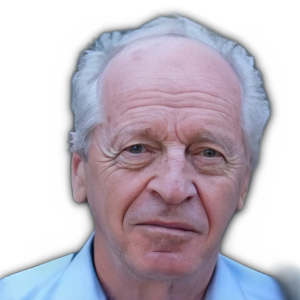
Scientific project director
NGO "International Academy of Informatization"
Sciences, Academician of the Academy of Mineral Resources (AMR) and the International Academy of Informatization (IAI)
He has 283 publications in scientific journals and collections of Kazakhstan, CIS countries and foreign countries in the field of geological models for assessing predicted mineral resources.
Currently he is the scientific director of projects:
1. “Development and commercialization of a set of programs for assembling a digital forecasting system and its testing in the Zhezkazgan region with the allocation of promising areas for gold” (IAI, 2023-2025).
2. “Construction and simulation study of models of ore formation mechanisms in order to identify patterns of formation and placement of ore objects” (AMR RK, 2024-2026).
3. “Development of theoretical foundations, methodology and technology for constructing models of geological space based on material, structural and geometric characteristics” (AMR RK, 2024-2026).
4. “Development of a technological system for digital forecasting of ore objects with a low discoverability status” (AMR RK, 2024-2026).
Assessment of subsoil for ore minerals based on phase geochemistry, multi-model forecasting method (MMP) technology
Assessment of Subsurface for Concealed Ore Deposits: A Key Challenge in Modern Mineral Exploration
The evaluation of subsurface for concealed ore deposits is one of the primary challenges in contemporary mineral exploration. This issue is particularly relevant for Kazakhstan, where the mining and metallurgical sector serves as a cornerstone of the national economy. The low productivity of conventional exploration methods highlights the urgent need to establish new scientific and technological approaches for predicting concealed ore bodies.
Subsurface assessment comprises three interrelated components:
1. Knowledge – models and conceptual frameworks,
2. Geological data – information on subsurface characteristics,
3. Technology – methodologies for transforming knowledge and data into predictive insights (new knowledge).
The fundamental model for ore body formation is the in situ element redistribution model, which leads to the polar structuring of concentration fields. This structuring results in ore deposits forming within element accumulation zones or their immediate peripheries. As a consequence, the most straightforward and natural predictive characteristics of ore deposits are element distribution field models, represented as 2D geochemical element concentration maps.
Given the necessity of detecting concealed ore bodies, phase analysis of matter is required to penetrate the geological environment up to several hundred meters beneath the surface. Data processing follows the Multi-Model Prediction (MMP) methodology, which includes:
• Structural and statistical analysis,
• Development and optimization of predictive models,
• Assessment of correlations between target and predictive characteristics (based on reference samples),
• Classification and zoning,
• Formulation and computation of the predictive target function,
• Final interpretation and assessment of results.
All computational processes are performed using the proprietary ELAN software suite, which consists of six functional modules. This approach has been successfully applied in geological exploration projects across Rudny Altai, Western Torgai, the Zhezkazgan ore region, and the Spassk copper ore zone.
